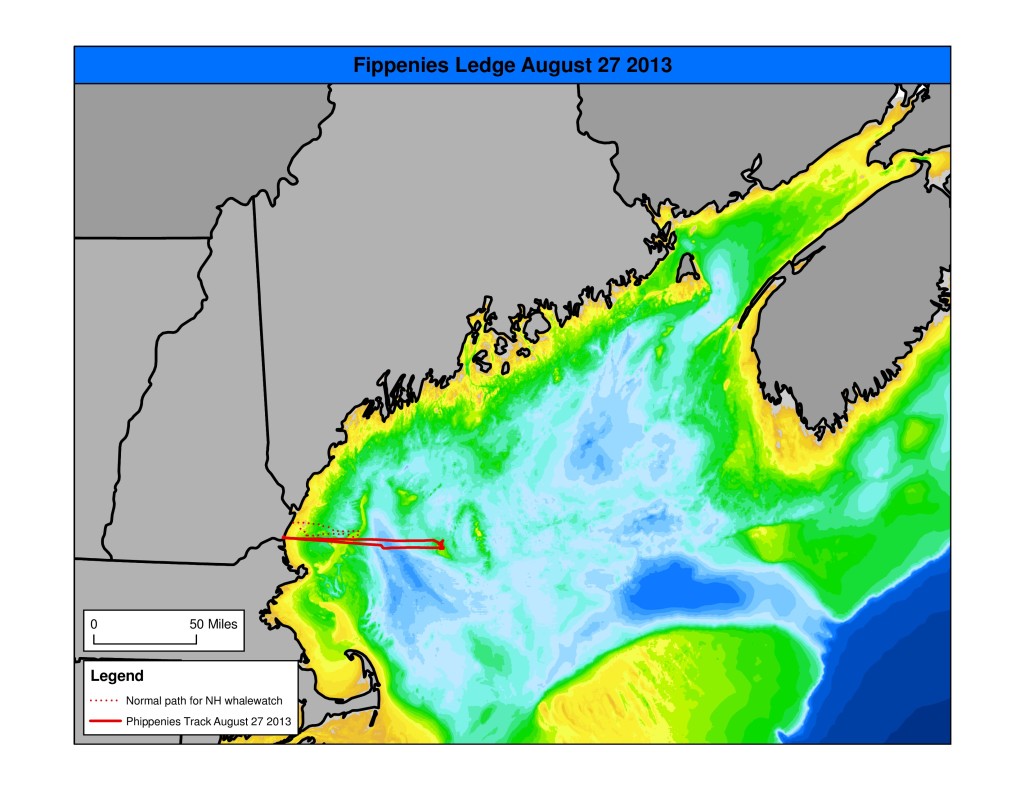The following story, from a recent trip to Fippennies Ledge, reminded me about a sighting of Hudsonian Godwits that I recounted on page 5 of Birdwatching in New Hampshire.
About Fippennies Ledge
During a trip with Eastman’s on August 27th 2013 I had the opportunity to witness a flock of American Golden-Plovers, one of the world’s great long distance migrants. Fippennies is an underwater shoal located deep in the Gulf of Maine. The ocean surface above the ledge looks to the human eye like any other patch of ocean off the coast of New England. Only by looking at sonar do you realize that the sea floor above the ledge rises to a relatively shallow 300 meters. The consequent upwelling of nutrients creates a cascade of life that begins with phytoplankton and reaches epic proportions in the many whales that can be found in the area. The abundance extends to fish and birds also, and it was in pursuit of a bounty of cod and haddock that Eastman’s organized the trip. My purpose in going was to survey for bird specialties that are found far out into the Gulf of Maine, including Leach’s Storm-Petrel, Sabine’s Gull, Great Skua, and South Polar Skua.
American Golden-Plover
I was not expecting to see American Golden-Plover, which breeds across a vast range from Hudson Bay west to Alaska. They winter on the other side of the equator in the grasslands of central and southern South America. Though a regular fall migrant in New Hampshire, most records are of single birds, usually occurring from late September through October, and reports of more than ten birds are rare. An hour after sunrise on August 27th, I saw a flock of 70 adults fly across the bow heading due south.
The story of how they get from breeding grounds to winter quarters is remarkable and is what reminded me of the story from Birdwatching in New Hampshire. Both the Golden-Plovers and the Godwits take an overland route north that brings them through the center of the continent to their Arctic breeding grounds. Consequently, both are extremely rare spring visitors in the Northeast. By contrast, most adult birds depart from the Canadian Maritimes (plovers) or James Bay (godwits) in fall and fly directly across the Atlantic Ocean non-stop to South America. The majority of the American Golden-Plovers that are seen in New Hampshire are juveniles, which take a more coastal route south. I have seen them many times, usually on ploughed fields in the Connecticut or Merrimack River valleys, often associating with Killdeer. To refer to the birds I saw over Fippennies as a sighting is to do them an injustice. It would be more accurate to say that I witnessed the unfolding of a moment in one of the world’s epic journeys. And with that, they were gone, a few miles closer to South America, a few minutes counted off an incredible journey.


No comments yet.